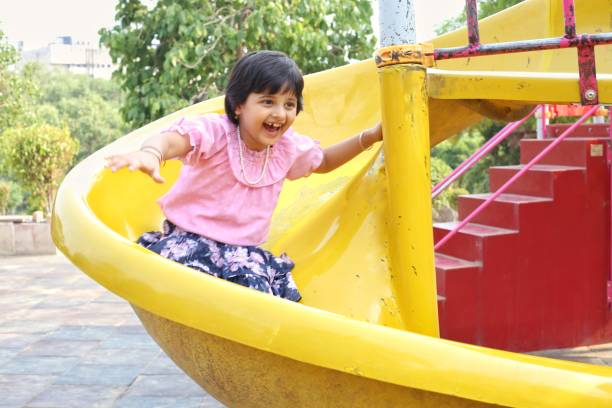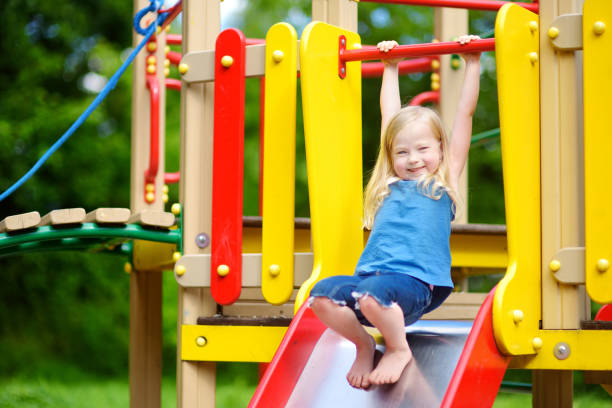Introduction: Play That Shapes a Child’s World
Every child deserves a space to move, imagine, and explore. A vibrant and fun-filled playscape offers exactly that. These spaces are specially designed to combine joy, movement, and learning into one engaging environment.
In this article, you’ll discover the benefits of creating such spaces for children and how they support growth through active, creative play.
What Makes a Playscape So Special?
Unlike a standard playground, a playscape blends structured activities with open-ended exploration. These play areas often include climbing zones, sensory panels, and imaginative themes that spark creativity.
Whether indoor or outdoor, a thoughtfully designed space encourages both physical activity and cognitive development. It gives kids the freedom to play their way—safely and with purpose.
Why Every Child Needs a Great Play Space
There’s more to active play than meets the eye. Here’s how the right environment supports key areas of a child’s development:
- Gross motor skills are strengthened through climbing, jumping, and balancing.
- Social interaction improves during cooperative games and group activities.
- Emotional growth is boosted when kids build confidence through challenge-based play.
- Cognitive skills are sharpened by problem-solving zones and creative stations.
- Imagination comes alive through role-play areas like pretend markets, pirate ships, or castles.
In short, these spaces provide a foundation for learning in disguise.
Indoor vs. Outdoor Options: Which One Is Right?
Both indoor and outdoor environments offer unique experiences. The choice depends on available space, safety needs, and age group.
Indoor Play Areas
Perfect for younger children or rainy-day fun. These often feature padded floors, tunnels, slides, and small sensory setups.
Outdoor Adventures
Great for older kids who need space to run and explore. These often include climbing walls, swings, obstacle courses, and more.
For creative indoor or outdoor play options, check out Trendy Panda, where fun and safety go hand in hand.
Choosing the Right Setup for Your Child

When designing a fun-filled environment for children, it’s important to consider their age and abilities. Here are some quick suggestions:
- Babies and toddlers: Soft toys, musical mats, and simple textures.
- Preschoolers: Small slides, sandboxes, and basic puzzles with sound.
- School-age children: Climbing equipment, role-play stations, and interactive panels.
Additionally, ensure every element follows safety guidelines and is built for durability.
For more help selecting age-appropriate features, visit this NAEYC resource on toy and play safety.
Key Features to Look For
Every parent wants a safe, fun, and enriching experience for their child. Look for the following when selecting or designing a play space:
- Safety elements like rounded corners, guardrails, and soft landings
- A variety of activities including physical challenges and quiet zones
- Colorful and creative design that excites curiosity
- Inclusive elements for children of different needs and abilities
If possible, involve your child in choosing themes or features—they’ll love being part of the process.
Learning Through Play

Learning doesn’t stop at books. These spaces teach real-world skills through action. For example:
- Math concepts are introduced through counting games or hopscotch.
- Science skills emerge when exploring nature-based zones.
- Language development happens during storytelling or imaginative role-play.
Playspaces are where education and fun meet naturally—without pressure or screens.
Make It Safe and Engaging
Safety should always come first. Whether at home, in a school, or in a public park, follow these tips to ensure a secure experience:
- Regularly inspect equipment for wear and tear
- Use impact-absorbing ground surfaces like foam or rubber mulch
- Keep sharp objects and loose parts away
- Supervise younger children during active play
These simple precautions go a long way toward keeping playtime worry-free.
Easy Ways to Boost Play at Home
Even if you don’t have a large yard, you can create a meaningful space indoors or in smaller outdoor areas. Try:
- A corner with soft blocks and a ball pit
- Mini slides or tunnels in the playroom
- Themed role-play stations like a kitchen, store, or doctor’s office
- Music walls or sensory bins for hands-on exploration
The goal isn’t to go big—but to create a place where play is encouraged and supported.
Final Thoughts: Let Playtime Thrive
Children thrive in spaces that inspire curiosity, movement, and laughter. A well-planned playscape offers more than just fun—it builds strong minds and bodies.
Whether you’re setting one up at home or exploring local options, remember that the best environments give kids room to be themselves. Let them climb. Let them explore. Let kids be kids—just the way they’re meant to be.
Want to explore more playful options for your child? Visit Trendy Panda for thoughtfully selected play products that support joy and development.





